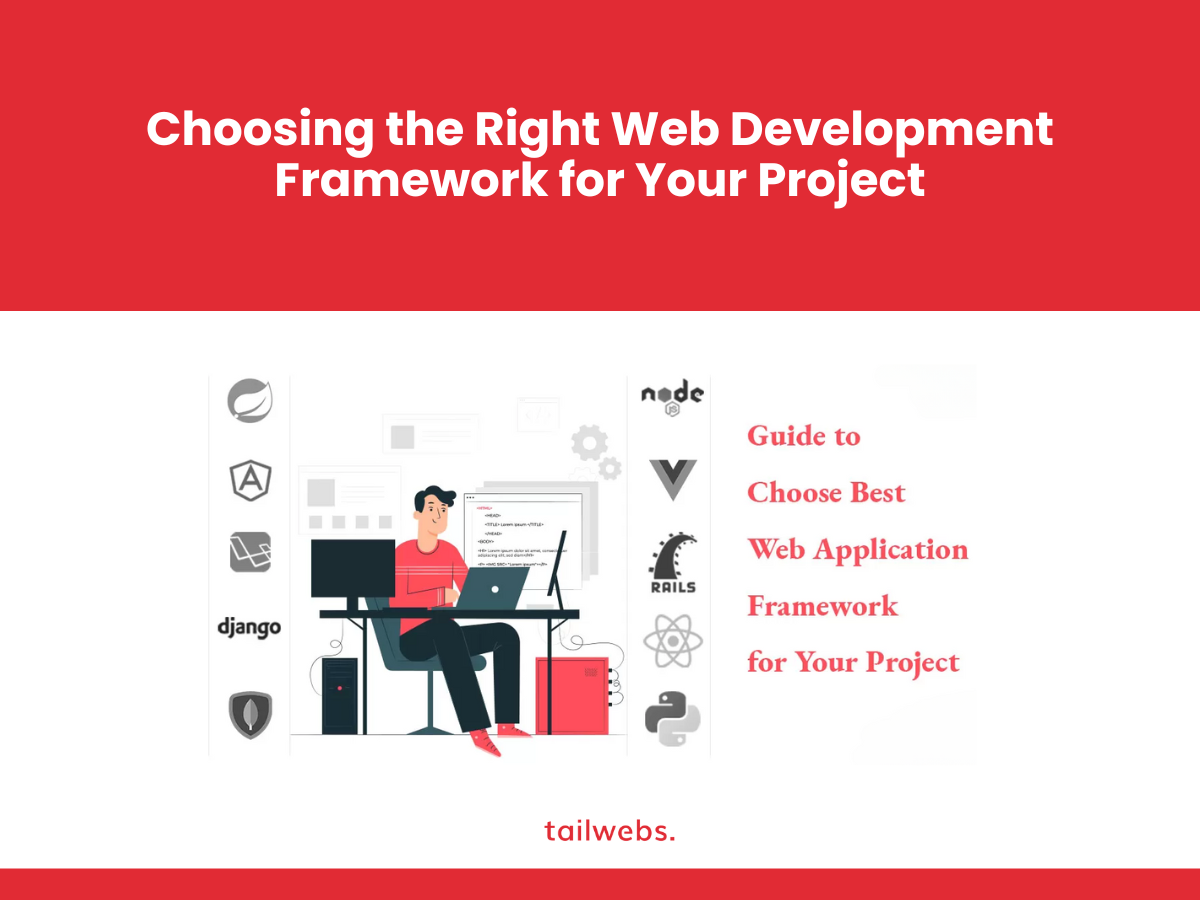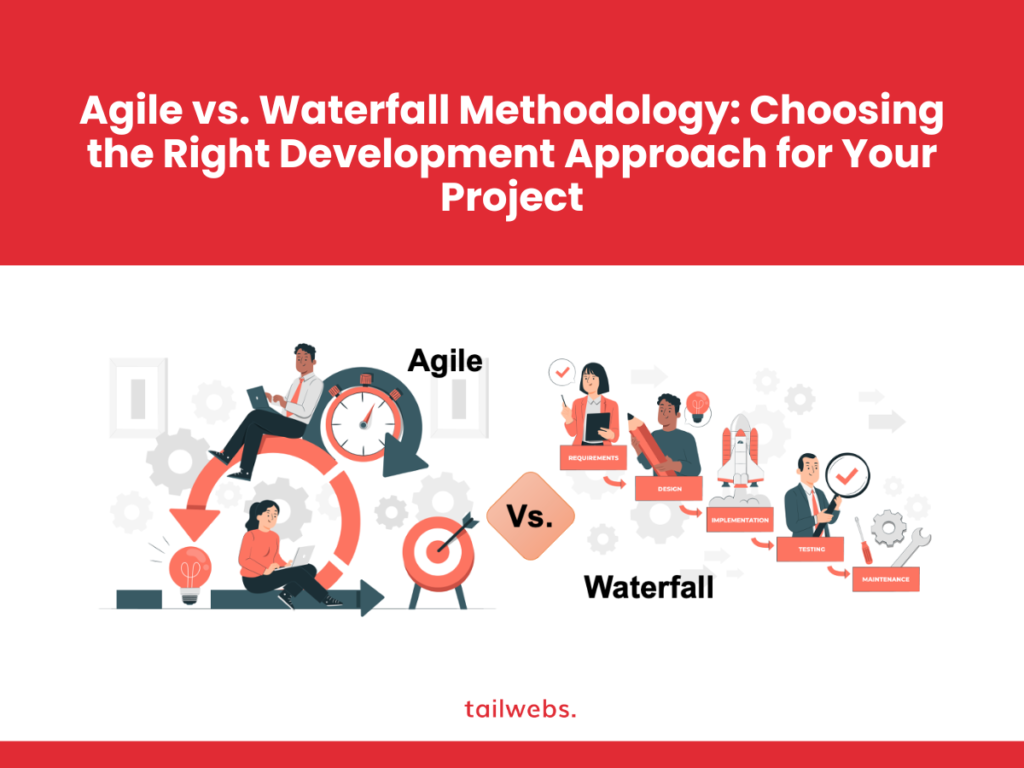Choose the Right Web Development Framework for Your Project
The digital landscape thrives on innovation, and web development frameworks play a pivotal role in building robust and dynamic websites and applications. These frameworks provide developers with a foundation of pre-written code, libraries, and tools, streamlining the development process and fostering efficiency. But with a plethora of frameworks available, selecting the most suitable option for your project can be a daunting task. This comprehensive guide empowers you to navigate the web development framework landscape and make an informed decision for your next project.
Understanding Web Development Frameworks: Building Blocks for Success
Web development frameworks encompass a collection of pre-built code components and functionalities that developers can leverage to expedite the creation of web applications. Imagine building a house – frameworks provide the pre-fabricated walls, electrical wiring, and plumbing, allowing developers to focus on customizing the layout, aesthetics, and unique features of your project.
Here are some key benefits of utilizing web development frameworks:
Reduced Development Time:
Frameworks offer pre-written code modules and functionalities, eliminating the need to code everything from scratch. This translates to faster development cycles and quicker time to market for your project.
Improved Code Quality:
Frameworks often enforce coding best practices and conventions, leading to cleaner, more maintainable code. This reduces the risk of errors and simplifies future modifications or maintenance.
Enhanced Security:
Many frameworks prioritize security by incorporating built-in features and libraries to safeguard against common web vulnerabilities.
Active Community and Support:
Popular frameworks typically boast extensive online communities and documentation resources, providing developers with valuable support and troubleshooting assistance.
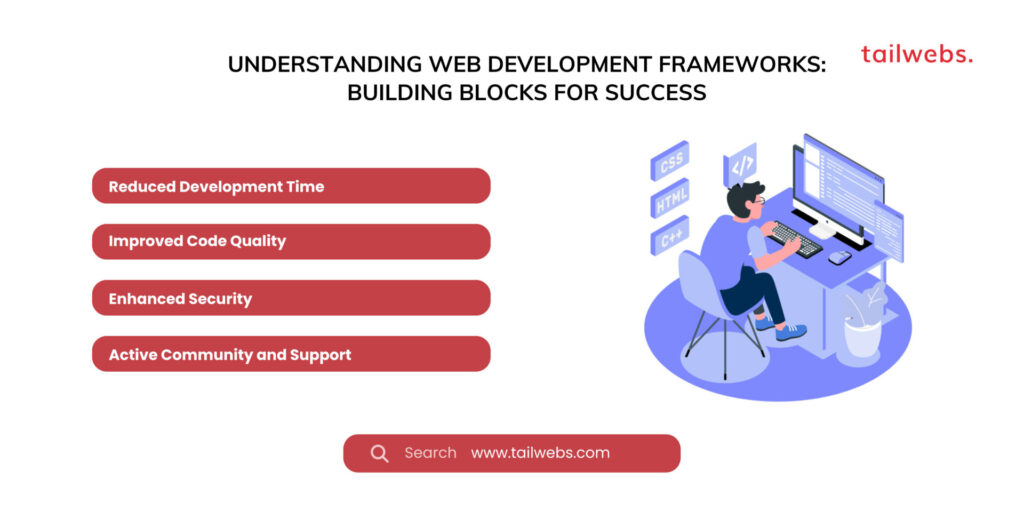
A Taxonomy of Frameworks: Categorizing Options for Diverse Needs
Web development frameworks cater to various aspects of web application development. Understanding these categories is crucial for selecting the most appropriate framework for your project:
Front-End Frameworks:
These frameworks focus on the user interface (UI) and user experience (UX) of a web application. They handle tasks like DOM manipulation, styling, and user interactions. Popular Front-End frameworks include React, Angular, and Vue.js.
Back-End Frameworks:
These frameworks handle the server-side logic of a web application, including data processing, database interactions, and business logic implementation. Examples of Back-End frameworks include Django (Python), Ruby on Rails (Ruby), and Laravel (PHP).
Full-Stack Frameworks:
These frameworks focus on the user interface (UI) and user experience (UX) of a web application. They handle tasks like DOM manipulation, styling, and user interactions. Popular Front-End frameworks include React, Angular, and Vue.js.
Choosing the Right Framework: A Project-Centric Approach
The optimal web development framework selection hinges on several factors specific to your project’s requirements and goals. Here’s a framework to guide your decision-making process:
Project Type:
Consider the type of web application you’re building. A simple brochure website might have different framework requirements compared to a complex e-commerce platform or a real-time chat application.
Project Scale and Complexity:
For larger, feature-rich projects, robust frameworks like Angular or Django might be suitable. Smaller projects with simpler functionalities could benefit from the flexibility of frameworks like Vue.js or Flask (Python).
Team Skills and Experience:
Evaluate your development team’s expertise. Choosing a framework that aligns with their skillset can optimize development efficiency and minimize the learning curve.
Project Timeline:
Frameworks with extensive pre-built components can expedite development. Consider the time constraints of your project when evaluating framework options.
Community and Support:
A vibrant community and comprehensive documentation resources are invaluable assets. Prioritize frameworks with strong community backing for easier access to support and troubleshooting assistance.
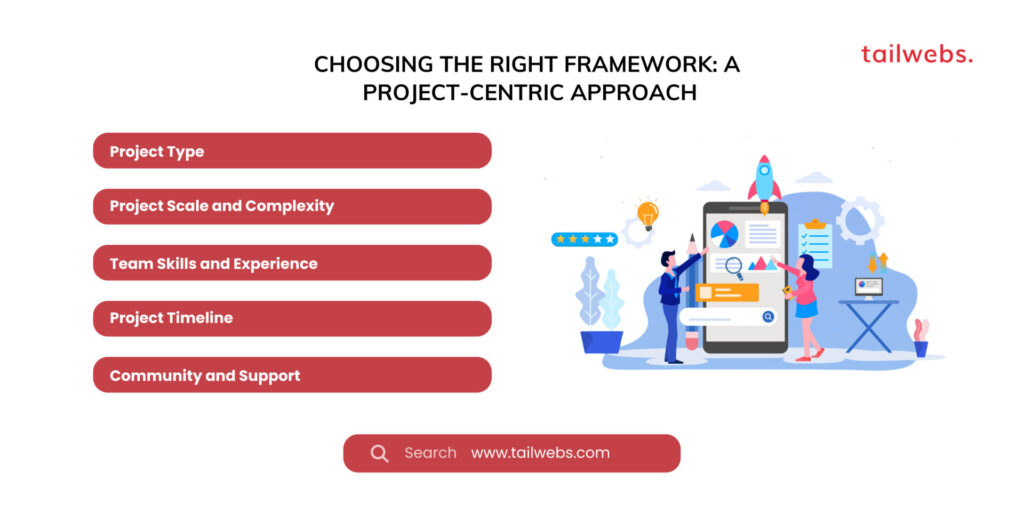
A Glimpse into Popular Frameworks: Understanding Their Strengths
Let’s delve into some of the most popular web development frameworks and explore their key strengths:
React (Front-End):
Developed by Facebook, React is a powerful and versatile framework known for its component-based architecture, virtual DOM for efficient UI updates, and vast ecosystem of libraries and tools. React excels at building complex, interactive user interfaces and single-page applications (SPAs).
Angular (Front-End):
Created by Google, Angular is a comprehensive framework offering a structured, opinionated approach to web development. Angular utilizes TypeScript for enhanced code maintainability and boasts features like dependency injection, routing, and two-way data binding. It’s ideal for building large-scale, enterprise-level web applications.
Vue.js (Front-End):
Vue.js stands out for its simplicity, flexibility, and ease of learning. It offers a progressive approach, allowing developers to choose
Django (Back-End):
Written in Python, Django is a high-level, full-featured framework renowned for its rapid development capabilities, clean syntax, and robust security features. Django is an excellent choice for building complex web applications with intricate back-end functionalities and rapid development cycles.
Ruby on Rails (Back-End):
This popular framework, built on the Ruby programming language, is known for its developer-friendly nature, convention over configuration philosophy, and emphasis on code readability. Ruby on Rails is well-suited for building web applications that require rapid prototyping and a focus on developer productivity.
Laravel (Back-End):
Developed in PHP, Laravel is a feature-rich framework offering a clean MVC architecture, expressive syntax, and a vast ecosystem of packages. Laravel excels at building complex web applications, e-commerce platforms, and content management systems (CMS).
Beyond the Mainstream: Exploring Niche Frameworks
While the aforementioned frameworks dominate the landscape, numerous niche options cater to specific requirements:
Express.js (Back-End):
This lightweight Node.js framework offers a flexible and minimalist approach to back-end development, ideal for building APIs and microservices.
Next.js (Full-Stack):
Built on top of React, Next.js provides features like server-side rendering (SSR) and static site generation (SSG) for enhanced SEO and performance. Next.js is a great choice for building SEO-friendly web applications and e-commerce platforms.
Gatsby (Full-Stack):
Another React-based framework, Gatsby excels at building static websites and progressive web applications (PWAs) that prioritize performance and scalability.
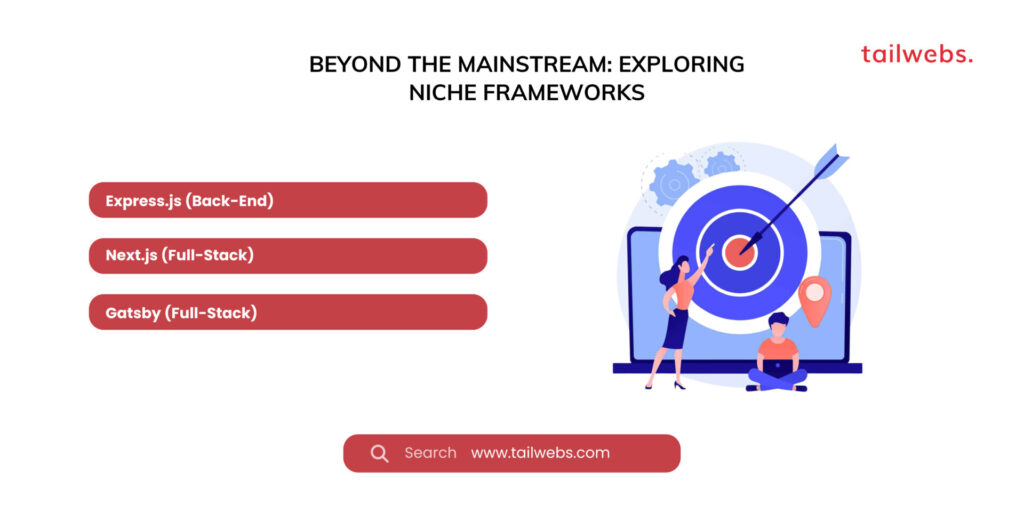
The Continuous Evolution of Web Development Frameworks
The web development landscape is dynamic, and web development frameworks are constantly evolving. Here are some recent trends to watch:
Rise of JavaScript Frameworks:
JavaScript continues to reign supreme on the front-end, with frameworks like React, Vue.js, and Angular remaining dominant players.
Focus on Developer Experience (DX):
Frameworks are increasingly prioritizing developer experience by offering features like improved tooling, hot reloading, and streamlined debugging processes.
Microservices Architecture:
The growing popularity of microservices architectures is influencing framework design, with frameworks offering better support for building modular and scalable web applications.
Static Site Generation (SSG) and Server-Side Rendering (SSR):
The focus on SEO and performance is driving the adoption of frameworks that enable SSG and SSR functionalities.
Staying informed about these trends can empower you to select a framework that aligns with the latest advancements in web development.
The Final Verdict: Making an Informed Choice
Choosing the right web development framework is a crucial decision that can significantly impact your project’s success. By meticulously evaluating your project’s requirements, team expertise, desired development speed, and the importance of community support, you can select the framework that best propels your project forward.

